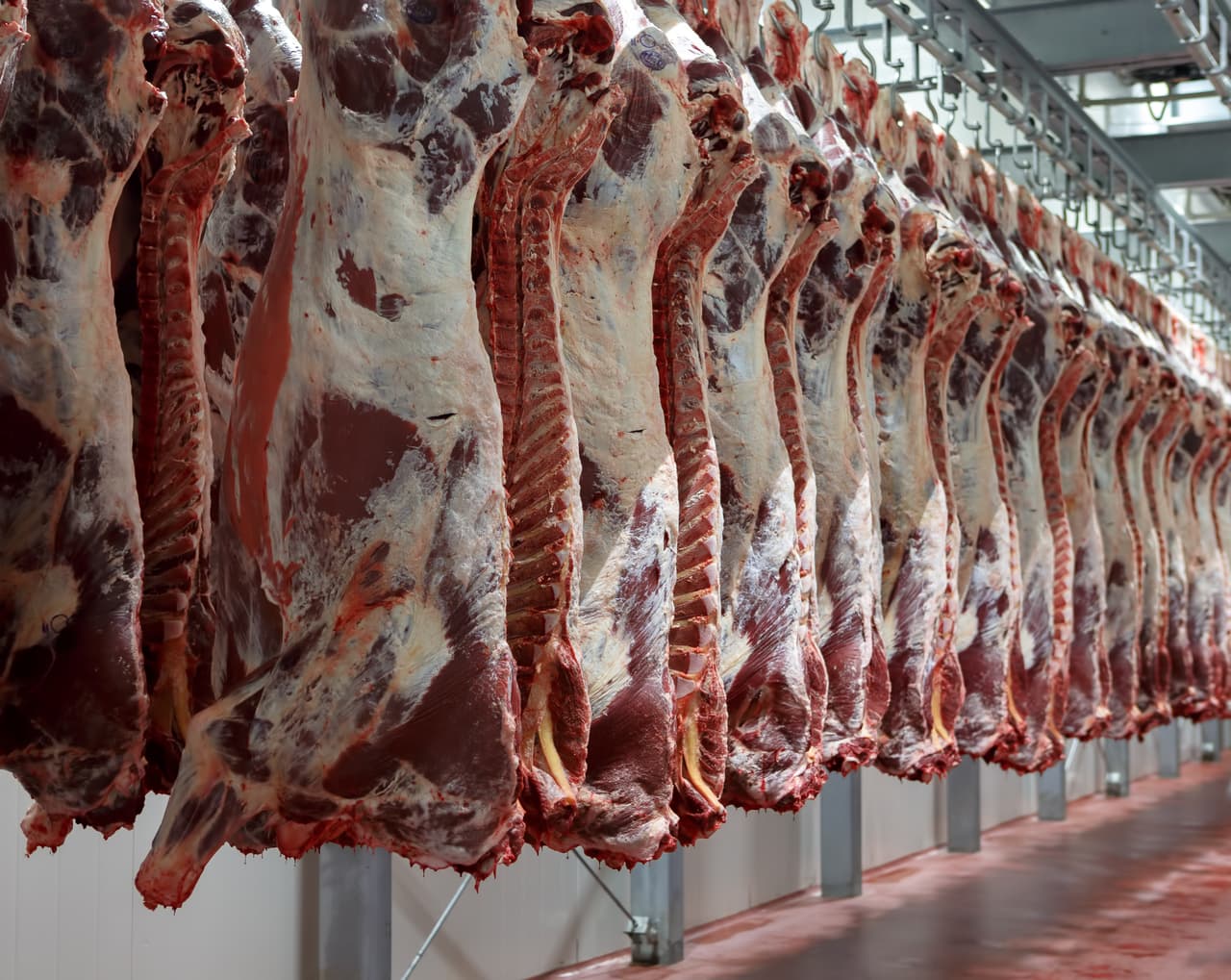
One in four UK abattoirs fails to meet basic hygiene standards
The breaches mean meat contaminated with bugs that cause serious food poisoning can potentially reach supermarket shelves.
One in four slaughterhouses is failing to take basic hygiene precautions to stop contaminated meat reaching the public, the Bureau of Investigative Journalism can reveal.
An analysis of government audits carried out at more than 300 abattoirs in England, Wales and Northern Ireland identified major hygiene failings in more than a quarter of the meat plants. The failings could expose consumers to serious food poisoning illnesses such as E.coli, salmonella or campylobacter. The true situation may be even worse.
The investigation has also revealed that official Food Standards Agency (FSA) records were falsified to conceal true levels of meat contamination at an abattoir processing pigs, cattle and sheep. A whistleblower said data relating to the contamination of carcasses was mis-recorded in order to mask poor hygiene practices at the plant - potentially allowing dirty meat to enter the food chain.
The Bureau analysed the most recent audit reports resulting from official inspections by the FSA of 323 abattoirs in England, Wales and Northern Ireland. One key test that slaughterhouses have to pass is that “all handling and processes from slaughtering to despatch are done in a way that avoids the contamination of meat and offal entering the food chain”.
Out of the abattoirs audited, 86 did not meet that benchmark - with 'major' hygiene breaches found. They include instances of carcasses coming into contact with the factory floor (often dirty with the detritus of slaughter), cutting equipment not sterilised or washed adequately, and meat splashed with dirty water potentially containing faecal matter.
Minimising the risk of meat becoming contaminated with faecal matter is a priority, as it can contain bacteria which can cause food borne illnesses.
Livestock can become caked with faeces on farms or during transport to slaughter and this can be transferred to carcasses during processing, particularly during the removal of an animals' hide or fleece.
Food-borne illnesses affect about a million people in the UK each year, according to official estimates, with around 20,000 admitted to hospital and 500 deaths annually. Foods most often linked to food poisoning cases include meat, poultry and fish.

A strain of E.coli – known as 0157 – is amongst the most dangerous food-borne illnesses and can cause severe stomach pain, bloody diarrhoea and kidney failure. Although rare, in severe cases it can lead to haemolytic uraemic syndrome (HUS) which can prove fatal, particularly for young children.
E.coli 0157 is often found in the guts or waste of animals, including cattle, and meat infected during slaughter and processing is one route of transmission.
Twenty one people died during the UK's worst E.coli 0157 outbreak in Scotland in 1996, blamed on contaminated meat. A later outbreak - in South Wales in 2005 - saw more than 150 people – many school children – fall ill and one child subsequently died. Dirty meat was again found to be the cause of the outbreak.
Professor Hugh Pennington, one of the UK's leading microbiologists, chaired the official inquiries into those E.coli outbreaks in Wales and Scotland. He told the Bureau the FSA should make abattoirs take hygiene seriously.
“If it was one in 100 even that would be too many but one in four is unacceptable. This is basic hygiene. It’s not rocket science, it’s common sense," he said. "The FSA should be coming down on this like a ton of bricks. It’s very disappointing this is going on.
"The main risk is E.coli 0157, which my review looked into. The consequences can be catastrophic. People died."
Responding to the Bureau’s findings the FSA said no visibly contaminated meat reached the public and hygiene failures were "not tolerated", with robust enforcement action taken against failing plants.
It said in a statement: "All carcasses are inspected and directed for rectification if contaminated before health marking, so nothing contaminated goes onto the market and poses a risk to the consumer."
Rectification means cutting off any parts of the carcass which are visibly covered with faeces but Professor Pennington said that does not stop contaminated meat getting through.
“Just cutting off the infected part isn’t microbiologically sound,” he said. “It’s not good enough. You might be able to see the bit with shit on it but what you might not see is the invisible bacteria further up the meat”.
Ron Spellman, of the European Food and Meat Inspectors Association (EWFC), told us the failure of 86 slaughterhouses to meet all the hygiene regulations would “increase the risk” of dangerous bacteria “being transferred to the meat the consumer will receive."
He also agreed with Professor Pennington that just cutting off visibly contaminated bits of the carcass would not solve the problem. He said the meat would still be “more microbiologically contaminated, even after the visible faeces have been cut off, than a carcass that was never visibly contaminated”.
The Bureau put these concerns to the FSA, who responded: "The purpose of trimming visual contamination is not to make carcasses sterile, but to remove areas where the risk of pathogenic bacteria being present is highest."
How FSA data was falsified
A meat hygiene inspector at an abattoir went to the FSA in January 2015 alleging that contamination reports were being deliberately falsified to cover up poor hygiene which he believed posed a threat to human health. The whistleblower was unhappy with the FSA’s response and complained to the Civil Service Commission (CSC) - which regulates the civil service.
They asked the Scottish Food Standards Agency to investigate and CSC found that “incontrovertibly” reports had been falsified but concluded there had only been an “indirect risk” to consumers. They concluded that the FSA had breached the Civil Service Code in a report published last month.
The Bureau's findings come as the FSA considers relaxing the auditing regimes of some abattoirs in a bid to cut the overall number of inspections in order to reduce the burden on meat processors – and save money.
Under proposals currently being considered, slaughterhouses judged to be performing the best – found to be consistently compliant with regulations – will be subject to a full audit every 36 months.
At present the most compliant premises face re-auditing after 18 months. Unions representing meat inspectors say the proposals will do little to improve public food safety.
“Extending the frequency of audits will allow bad practice to continue longer without the oversight of independent scrutiny from the FSA, less checks on contract agencies that have proved they cannot be trusted,” said Paul Bell of Unison.
“If FSA wants to go down this route they need to increase the frequency of unannounced inspections by meat inspectors, not only in cutting plants but slaughterhouses too. The results of these unannounced inspections should then trigger a full unplanned and unannounced audit.”





